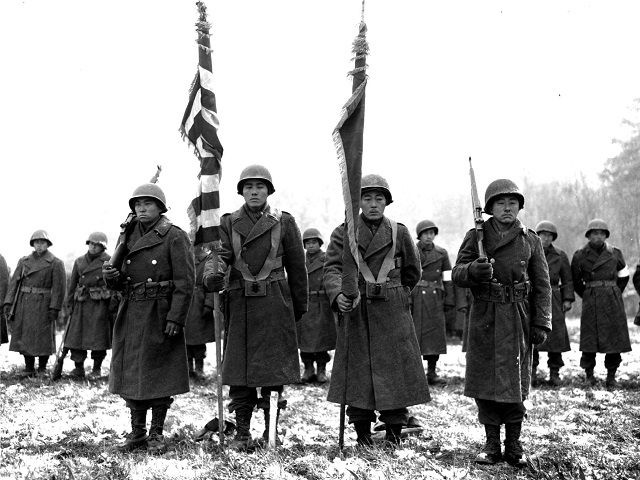A Memorial Day service in Salt Lake City on Sunday honored Japanese-American veterans, including those who served in World War II.
One of the few remaining World War II veterans in the community, 93-year-old Masami Haisashi, told local Fox13 News he was thankful so many young children attended the service, to help keep the memories alive.
“I think the main thing that struck me is that I don’t have many friends left from WWII,” said Haisashi, who served as an interpreter and translator for military intelligence in the Philippines during the war. “I’m missing a lot of people. That’s the first thing I notice. I’m the only one around. The others are either sick or not able to walk.”
KSL News has a picture gallery of the Salt Lake City service, in which American flags were placed in sand to honor those who lost their lives during World War II.
The Salt Lake City Tribune reports that most of those honored by the monument were “members of the 100th Infantry Battalion, the 442nd Regimental Combat Team and the Military Intelligence Service (MIS), U. S. Army units that received the U. S. Congressional Gold Medal of honor in 2010.”
The 442nd Regimental Combat Unit was formed after the U.S. government reversed its initial classification of Japanese Americans as enemy aliens, ineligible to serve in the armed forces.
The unit surpassed recruiting expectations, even though over 120,000 Japanese Americans had been forced into internment camps after the attack on Pearl Harbor. In fact, a PBS documentary on the unit noted that some 2,100 recruits came directly from the internment camps.
The 442nd served with such distinction in Italy that when General Mark Clark entered the city of Livorno, he wanted his Japanese-American troops marching right behind him. Twenty members of the 442nd would receive the Congressional Medal of Honor, although it took 55 years to make it happen. One of them was Daniel Inouye, a high-school senior at the time of the Pearl Harbor attack, and a six-term U.S. Senator when his Medal of Honor was finally granted.
This was the final exploit of Inouye’s military career, as recounted by PBS:
On April 21, 1945, with the war in Europe in its final days, they were given orders to attack a heavily defended ridge, Colle Musatello.
As he led his men up the slope, three machine gun nests began firing at them and Inouye was hit in the abdomen. He continued to lead his men up the slope, hurled a grenade to knock out the first machine gun nest, then killed its crew with his tommy gun. He silenced the next gun with two more grenades.
As he pulled the pin on yet another and got ready to throw it into the third machine gun nest, German shrapnel nearly severed Inouye’s right arm. Somehow, with his left hand, he pried his dead fingers from the live grenade and threw it, then started up the hill again. He was hit again in the leg, and tumbled down the hillside.
At the aid station, Inouye was given morphine – so much morphine that when surgeons at a field hospital began to amputate his shattered arm he had to endure it without anesthetic.
The 100th Infantry, comprised largely of Japanese-Americans from Hawaii who signed up before the ban on enlistment went into effect, had such a high casualty rate that they became known as the “Purple Heart Battalion.”
The National Park Service reports that “more than 33,000 Japanese Americans played a major role in the war effort.”

COMMENTS
Please let us know if you're having issues with commenting.